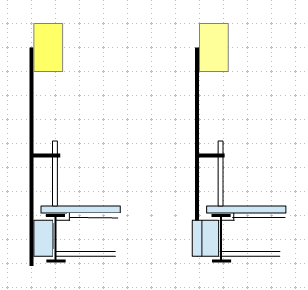Rabbit12:
Since they say…, "We've done this forever!", or ‘we’ve always done it that way,’ they should be able to show you all the details from the luminaries on down to the junction box, the hardware and its suppliers, all material sizes and grades, calcs. and permit approvals, meeting the codes. They should be able to show that their half-assed details, as shown, meet the code and have been accepted by various AHJ’s. More likely than not, the fact is, that they just put em up the simplest way possible for them, and didn’t give it a second thought. It didn’t fall or slip down when they tightened the second pipe clamp around the handrail post (self weight only), and that was that, and it hasn’t seen a design wind load since. And, now they want you to bless, or prove that their details are adequate, or warrant them with your stamp.
I would argue that it should be worst WL + 200lbs, or maybe the projected area of two workers and their tools in that wind. I wouldn’t expect anyone to go up there for the fun of it, in a wind storm, but they could get caught up there in a sudden storm or have to go up there in an emergency. So, I’d use something greater than a 40mph design wind. That’s the old engineering judgement thing rearing its head again. Since these are individual maintenance platforms (not 2 miles of city/river walkway, with a light post every 200’), they should give direction as to location and number of light posts and luminaries and you should design the platform for the added loads. They should assist you with their/any special detailing and hardware needed down to the base of their light post. It probably will be more practical/economical to use one pipe post for both functions, at those locations, but it will involve something other than std. pipe handrail hardware/fittings at those locations, for the larger light post. I assume that you control the platform framing, and it will have to be sized up at these locations. Maybe a fairly std. base detail can be developed which will work with many of your std. platform floor framing systems. A detail which distributes this new loading back into the platform fl. system, not just into the edge beam, in torsion.

